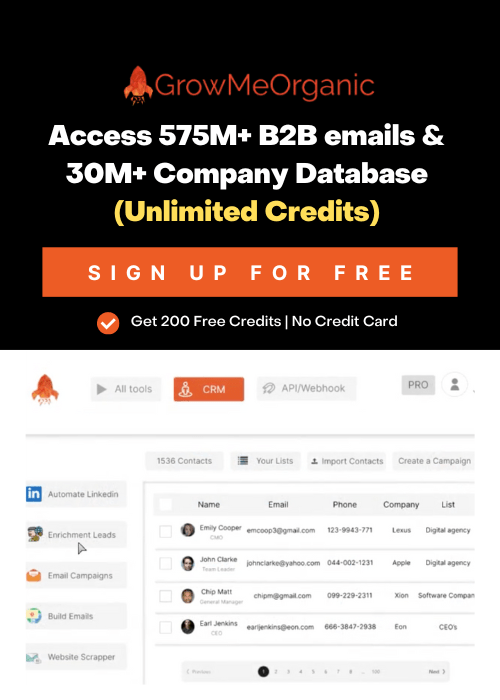Email marketing starts with a subject line which is the most influential component of growing a brand. Every subject line should be personal or descriptive. It attracts readers and gives them a reason to check out your content.
An average employee receives around 121 e-mails every day. Most inboxes are overloaded with emails, and that is why most emails are never opened. 47% of people open an email based on the subject line alone, so test different words and phrases.
You will be able to know what your audience prefers. In this article, you will find how to write subject lines in email marketing.
How to Write Good Email Subject Lines
Identify the purpose
Every email subject line should inform why the email is being sent. Know about the true purpose or intention of the email. Then use this to brainstorm, create and test different subject lines.
Mention call to action
A call-to-action makes the user click on your email. It could be a discount, important information or something free. It should be enticing enough to make them want to see your email. Mentioning a call to action with an incentive is tempting for users to open and read further.
Draft different Subject Lines
Write different versions of subject lines that convey a similar message about your content. Brainstorm a few ideas so that you are not stuck on a sentence for long.
Take Feedback
You can tell your colleagues to take a look at it and give feedback on the subject lines. Having a second opinion is always beneficial. It can help you see it from a different perspective.
Test different Subject Lines
Perform an A/B test to check and analyze which subject line performs best. Then take the most effective email subject line and use it for the upcoming email marketing campaigns.
Things To Include In Every Subject Line
To increase the chances of getting high open rates, include these important components of email subject lines.
Personalization
Personalization is shown to increase the open rates of your emails. To engage the users, always mention their names and talk about their interests.
For instance, out of special offers and ABC (your name) special offers for you! The chances are that the offer with the name will have a high open rate.
When users see their name, it will interest them to know more about it.
Keep It Concise
Your subject line should never look like a complete sentence or a story. It should be short and crisp. It must give an idea to the audience but shouldn’t convey it completely. Never exceed 9 words and 60 characters in any subject line.
For instance, users reading your emails on mobile devices prefer short subject lines.
Provide Value
Avoid sending promotional emails. Your recipients will only open your emails if they think they are getting any benefit from them. So, write a subject line that excites the reader to open it.
For instance, a discount or a free eBook will have a higher open rate than a request to subscribe.
Use Emojis
Emojis are the best way to grab the attention of your audience. Never use any random emoji. Depending on the content, use only those emojis that make sense.
Also never use more than 1 emoji at a time. Use emojis but make sure your main message is being conveyed. Emojis may not work for everyone, so experiment with them and see if it works well for you.
Highlight the Important Words
Make sure to highlight or capitalize the important words. But avoid writing all the letters and words in capitals.
- Buy 3 get 15% off on EVERYTHING
- Buy 3 get 15% off on everything
A wins the deal as it grabs attention and attracts users to open up your emails.
Mention Urgency
Since inboxes are mostly bombarded with emails, users avoid opening up emails. Always mention the urgency in your subject line. This will make users open it as soon as they receive it.
For instance, the 30% discount that expires today will grab attention and create a sense of urgency to open it up immediately to not miss out on the deal.
Never Mislead
If you mention a discount of 30% but provide your audience with only a 20% discount, they may open your mail but you would fail to build their trust.
Eventually, it will affect your business. So, promise value, but never mislead your audience.
Add Numbers or Digits
Subject lines such as “Use 2000 cash to bring eco-friendly Ganesha home” might give you more views and a higher success rate than “cash to bring eco-friendly Ganesha home”.
Adding numbers is necessary because it provides a viewpoint to the audience on what they can expect in the subject lines.
Add Pre-Header Text
Pre-header is a small line of text. It appears under or after the subject line of an email. It should not be overlooked and must be added.
The preheader text provides an idea about the subject of the mail. Hence, it urges the audience to read it.
Prioritize the Subject Line
Many marketers spend 90% of their efforts on strategizing the content of the email leaving subject lines behind. Although the content is important, it is crucial to prioritize the subject line.
You can use a task tracker app to allocate time accordingly on subjects and content.
Test Subject Lines
There is no fixed formula to create a perfect and successful subject line. The success rate depends on several factors depending upon your business.
Always monitor your recent subject line performance. Use A/B or multivariate testing to see if different subject lines affect your open rates. You can send two different subject lines to a group of people. Then, depending on the success rate, send it to the rest of the people.
Avoid Non-Reply Sender Name
Many people overlook emails from unfamiliar senders, and only a few of them would like to talk to a robot. This could be frustrating for a user.
Never use an email address with noreply@company.com. It looks less personal and stops recipients from adding your email to their address book.
Use a generic email address so that it looks like it is sent from a real person.
Start with Action-Oriented Verbs
Subject lines are a type of call-to-action that inspires people to click. Start the subject lines with action verbs. This will drastically increase the click rate of your emails.
For example, rejoice and celebrate with 5% cashback on appliances, at No Cost EMI rather than 5% cashback on appliances. The former subject line uses “Rejoice and Celebrate” to help the reader envision themselves on appliances.
Ask a Compelling Question
Ask a question in your subject line. This will draw readers’ attention by creating curiosity among them. For example, you might try the following:
A subject line like the above mentioned is encouraging as well as touch competitive. Asking questions is a smart move to make the recipient open your emails.
About Post Author
Anant Gupta
Growth Hacker, Marketing Automation Enthusiast & Founder of GrowMeOrganic
















